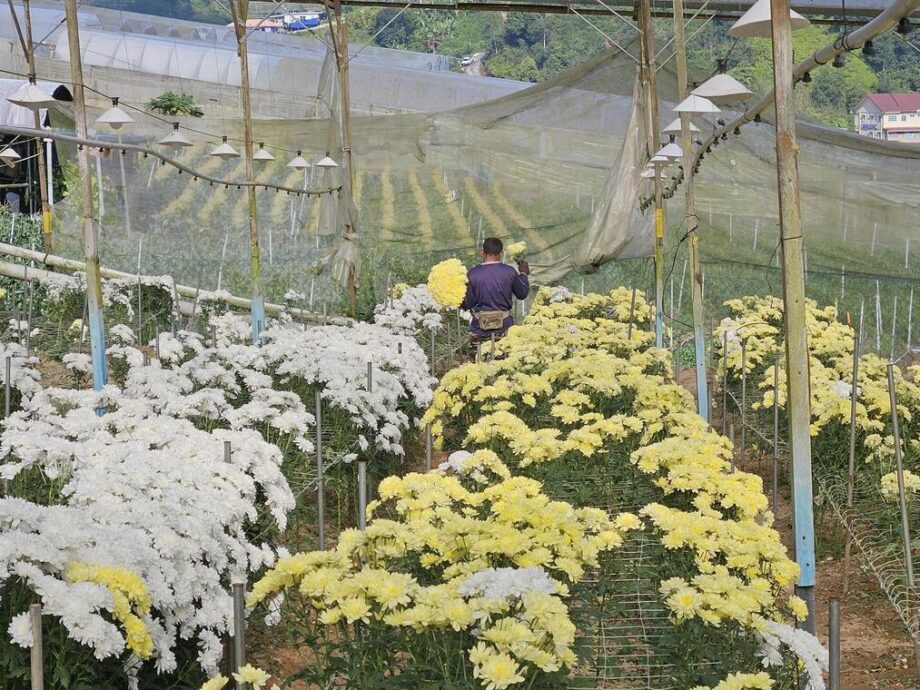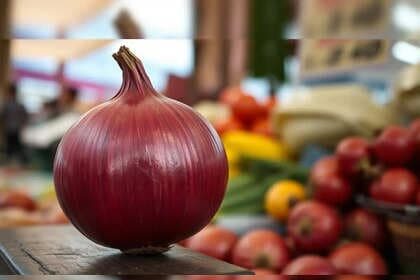Inside Malaysia’s flower belt
On the coastal plains of Muar, workers tend to flowering shrubs bound for urban streetscapes in Singapore. Far to the north, the cool slopes of Cameron Highlands fill with rows of chrysanthemums on their way to Japan. Together these hubs anchor a trade that placed Malaysia among the world’s leading exporters of ornamental plants and flowers. Industry revenue peaked at about US$121 million in 2019. The shock of Covid 19 cut demand and air freight capacity, yet exports have climbed back to around US$98.4 million in 2024. Recovery is uneven. Labor shortages and cheaper imports from China are squeezing margins, while shifting consumer tastes and a more digital marketplace are changing how growers plan, produce and sell.
- Inside Malaysia’s flower belt
- Labor shortages reshape the fields
- Price pressure from China and regional rivals
- What demand looks like in 2024
- Technology, quality and sustainability as the new edge
- Logistics and cold chain make or break exports
- Government policy and market access
- Farmers adapt through diversification and value addition
- What Malaysia can learn from global trends
- The Bottom Line
Why Muar matters
Muar’s nurseries prosper from a mix of location and water. The district sits within a day’s drive of Singapore, the Klang Valley and peninsular ports. Many nurseries trace ties to Singapore back to the 1970s, when Malaysia emerged as a reliable supplier of shrubs and trees for public projects. Tastes have moved with city planning goals. Landscaping teams now order shorter flowering trees, colorful shrubs, and hardy ground covers that work in tight spaces and high traffic areas. Plant sales still rise and fall with the property cycle, since fresh landscaping adds value to housing and commercial projects. Muar’s producers also benefit from plentiful water that supports large container plant operations year round.
Cameron Highlands at the heart of cut flowers
The highlands deliver what the lowlands cannot: a cool climate that favors high quality cut flowers. Growers in Cameron Highlands specialize in chrysanthemums, a staple for floral retail in Asia and a favorite in Japan for its long vase life and uniform color. More than 80 percent of Malaysia’s cut flower exports come from the highlands. Stable temperatures and diurnal shifts help produce strong stems and consistent blooms. A premium market has drawn some former vegetable farmers to switch to flowers. The promise is higher prices and dependable demand, provided growers meet strict standards for quality, grading and delivery.
Labor shortages reshape the fields
Growers report a shortfall of foreign workers in the range of 30 to 40 percent. This is a labor intensive industry where jobs are frequently labeled dirty, dangerous and difficult. Local workers often prefer service or factory roles that pay more and avoid tough outdoor conditions. Government plans to reduce reliance on foreign labor add another challenge. When teams are short handed, pruning, weeding and pest control are delayed. Yields fall and quality slips. Delivery schedules tighten because harvest and grading take longer. The pressure is sharpest in Cameron Highlands, where missing a narrow harvest window reduces vase life and export value.
Farms are testing ways to get more done with fewer hands. Automation is spreading in steps, not leaps. Potting machines, simple conveyors, fertigation systems, and drip irrigation help reduce repetitive work. Shade nets and low cost greenhouse structures protect crops and can cut pesticide use. Larger firms trial selective mechanization in transplanting and grading. Training is crucial. Skilled workers can manage more plants when supported by better tools and clear standard operating procedures. Industry groups and agencies can help by funding apprenticeships, offering short courses, and matching local job seekers with farms that pay steady wages with basic benefits.
Price pressure from China and regional rivals
Competition has shifted. Imports from China have brought large volumes of roses and carnations into regional markets at prices that Malaysian growers say can fall below their own production costs. China’s scale, lower costs in certain regions and well coordinated logistics push prices down across Southeast Asia. Regional rivals such as Indonesia and Thailand contend in similar crops. For Malaysian growers, the response has two tracks. Some move deeper into flowers where the country has a reputation for quality, especially chrysanthemums and select orchids. Others diversify within the ornamental category to potted plants and foliage where transport is less complex and shelf life is longer.
Costs have risen at the same time. Depreciation of the ringgit raises the cost of imported fertilizer, growing media, greenhouse plastics and planting materials. Electricity, packaging and transport have become more expensive. Air freight rates spiked during the pandemic and remain volatile. This erodes margins for exporters who already must meet strict grading and pre cooling standards. Growers say the only defensible strategy in commodity cut flowers is relentless quality and speed to market. Niche varieties, reliable supply and clean post harvest handling can still command a premium.
Marketing strategy is evolving. Direct to consumer channels, florist subscriptions and digital storefronts allow farms to tell their product story and gather data on demand. Branding around origin, for example Cameron grown chrysanthemums with verified vase life or Muar nursery plants with hardy landscaping performance, helps signal consistent standards. Buyers in Japan and Singapore often pay for predictability. That puts discipline in variety selection, grading and cold chain at the center of competitiveness.
What demand looks like in 2024
Malaysia’s floriculture trade now serves two intertwined markets. Exports focus on high grade cut flowers and selected potted items for Japan, Singapore, Thailand and Australia. Domestic demand is driven by hospitality, weddings, corporate events and urban greening. Kuala Lumpur anchors the country’s flower trade by volume because hotels, malls and event venues order continuously. Penang has emerged as a fast growing market, supported by tourism and city beautification. Online sales keep expanding. Consumers order bouquets, potted succulents, palms and ferns for homes and offices. The digital shift is pushing farms and wholesalers to offer reliable delivery windows and clear product photos that reduce returns.
Seasonal peaks still shape production plans. Lunar New Year, Hari Raya, Deepavali and Christmas mark sharp surges in demand for pots, foliage and cut flowers. Wedding seasons add bursts of orders for roses, lilies and custom color palettes. Chrysanthemum remains the workhorse in East Asia because it is versatile, widely recognized and easier to produce consistently in controlled environments. Stable chrysanthemum demand helps growers plan rotations and maintain steady export schedules.
Technology, quality and sustainability as the new edge
Technology is moving from research centers into greenhouses and packing sheds. Biotechnology and tissue culture supply clean planting material and uniform traits. The Malaysian Agricultural Research and Development Institute (MARDI) has released heat tolerant orchid lines and landscape plants tailored to local conditions. Advances in marker assisted breeding and high throughput screening help identify varieties with longer vase life, brighter colors and better resistance to disease. Genome editing is a frontier in ornamental crops, although bringing genetically modified flowers to market can face regulatory hurdles. For many growers, the near term wins are better planting materials and tighter cultural practices.
Smart greenhouse tools are becoming more accessible. Sensors track temperature, humidity and soil moisture. Automated irrigation and fertigation deliver precise water and nutrients. LED lighting supports uniform flowering while cutting energy use. Soilless systems such as hydroponics reduce disease pressure and can improve stem strength. Vertical and compact systems make sense for nurseries near cities that focus on potted plants and seedlings. These upgrades reduce risk from erratic weather and improve consistency, the attribute that matters most to repeat buyers and export inspectors.
Post harvest handling is just as important as production. Pre cooling, clean water management, ethylene absorbing sachets and modified atmosphere packaging extend vase life and reduce waste. Anti aging solutions can make transport to distant buyers more reliable and less costly. Sustainability requirements are rising too. Research on floriculture shows heavy pesticide use can harm workers and the environment, and many importing markets do not set explicit residue limits for ornamental flowers. Buyers increasingly ask for Good Agricultural Practices and integrated pest management records. Farms that adopt biological controls, precise dosing, and safer chemicals signal that their supply is stable and compliant. That message helps close deals with retailers that face their own environmental audits.
Logistics and cold chain make or break exports
The journey from Cameron Highlands to a Tokyo florist or a Singapore hotel is a race against time and temperature. Flowers need rapid pre cooling, clean grading benches, and consistent cold chain from packhouse to truck to airport. Any break in the chain shortens vase life and reduces price. Investments in reefer trucks, more packhouse capacity and scheduling software can provide immediate payoffs. Night harvests and early morning dispatches keep temperatures low. Klia offers strong cargo links, yet access to space during peak seasons can still be tight.
Other exporting nations offer lessons. Kenya struggled when air freight collapsed in early 2020, then worked with carriers to restore cargo capacity and experimented with direct sea freight for hardier flowers. Value added packing at source, digital certification and close communication with buyers helped the sector reset. Malaysian exporters can benefit from long term cargo agreements with airlines, pre booked belly space on passenger flights to Japan and Australia, and selective trials of sea freight to regional ports for robust varieties. The gain is lower cost per stem and a more resilient logistics network.
Government policy and market access
Policy support shapes the playing field. Authorities are negotiating market access, strengthening certification systems and promoting Malaysian flowers abroad. The country’s agricultural strategy recognizes horticulture, including cut flowers and landscape plants, as a growth area that can diversify rural income. Industry leaders have called for better tracking of varieties, prices and performance so buyers can compare Malaysian products with those from China and Vietnam. A shared database of traits and post harvest outcomes would help highlight local strengths and guide breeding priorities.
The labor policy debate is delicate. A rapid reduction in foreign worker numbers could deepen an existing shortage. bridging the gap will require a mix of faster approvals for needed roles, mechanization grants, and training programs to attract locals into skilled greenhouse work. Cold chain investments, interest subsidies for greenhouse upgrades, and tax incentives for automation would speed modernization. Aligning quality certification with the expectations of Japanese and Australian retailers can unlock higher value contracts that justify these upgrades.
Farmers adapt through diversification and value addition
When prices for popular flowers fall, farmers move. Some Cameron Highlands growers have planted chilli on part of their land to spread risk and maintain cash flow during weak flower cycles. Others are branching into potted foliage and hardy ornamentals that travel well and fit online retail. Landscape contractors increasingly want ready to plant mixes and slow growing accent plants that look good for months with minimal care. These categories favor nurseries that can deliver consistent sizes, clean roots and clear labeling.
Value addition is also rising. Bouquet assembly, branded packaging and farm direct subscriptions connect growers to consumers while improving margins. Social media marketing and simple web stores expand reach without large retail overhead. Partnerships with florists allow farms to show new varieties and receive quick feedback. In export markets, packed at origin solutions that pre grade and pre sleeve stems reduce breakage and speed customs clearance. Each small step pushes the industry toward higher productivity and more predictable earnings.
What Malaysia can learn from global trends
The global floriculture market continues to grow at a mid single digit pace. Smart greenhouses, compact growing systems and digital sales are transforming how flowers move from farm to vase. Greenhouse horticulture is expanding quickly worldwide because it improves yield, cuts pesticide use and stabilizes quality. Buyers in mature markets now ask for traceability and often prefer sustainable packaging. Producers who can certify their practices and demonstrate lower resource use gain an edge with retailers.
Export champions invest in logistics and specialization. Kenya and Ethiopia expanded their roles by securing air cargo links, diversifying routes and building trusted supply chains. Europe remains the largest consumer region with high expectations for quality and compliance. Malaysia can win by focusing on quality chrysanthemums and niches that reward reliability, while using technology to increase consistency and shorten cycle times. Digital tools that forecast demand and track inventory reduce waste. Direct to consumer channels at home and across the border in Singapore can lift margins without large marketing budgets. The common thread is discipline in production and a stronger story around clean growing, long vase life and dependable delivery.
The Bottom Line
- Malaysia’s floriculture exports rebounded to about US$98.4 million in 2024, still below the 2019 peak of US$121 million.
- Muar and Cameron Highlands anchor the industry, with the highlands producing over 80 percent of cut flower exports.
- Growers face a labor shortage estimated at 30 to 40 percent, while foreign labor curbs could tighten the crunch.
- Cheaper imports from China pressure prices for roses and carnations, pushing farms toward quality niches and diversification.
- Technology adoption, from tissue culture to smart greenhouses and better post harvest handling, is becoming central to competitiveness.
- Cold chain reliability and cargo access are critical; selective use of sea freight may help for hardy varieties.
- Government efforts focus on market access, certification and promotion; industry leaders call for better data and trend tracking.
- Domestic demand is buoyed by hospitality, events and online sales, with more interest in potted plants and foliage.
- Sustainability standards and safer pesticide use are rising priorities for buyers and regulators.
- Quality, consistency and reliable delivery remain the strongest levers for Malaysian growers to defend and grow market share.












